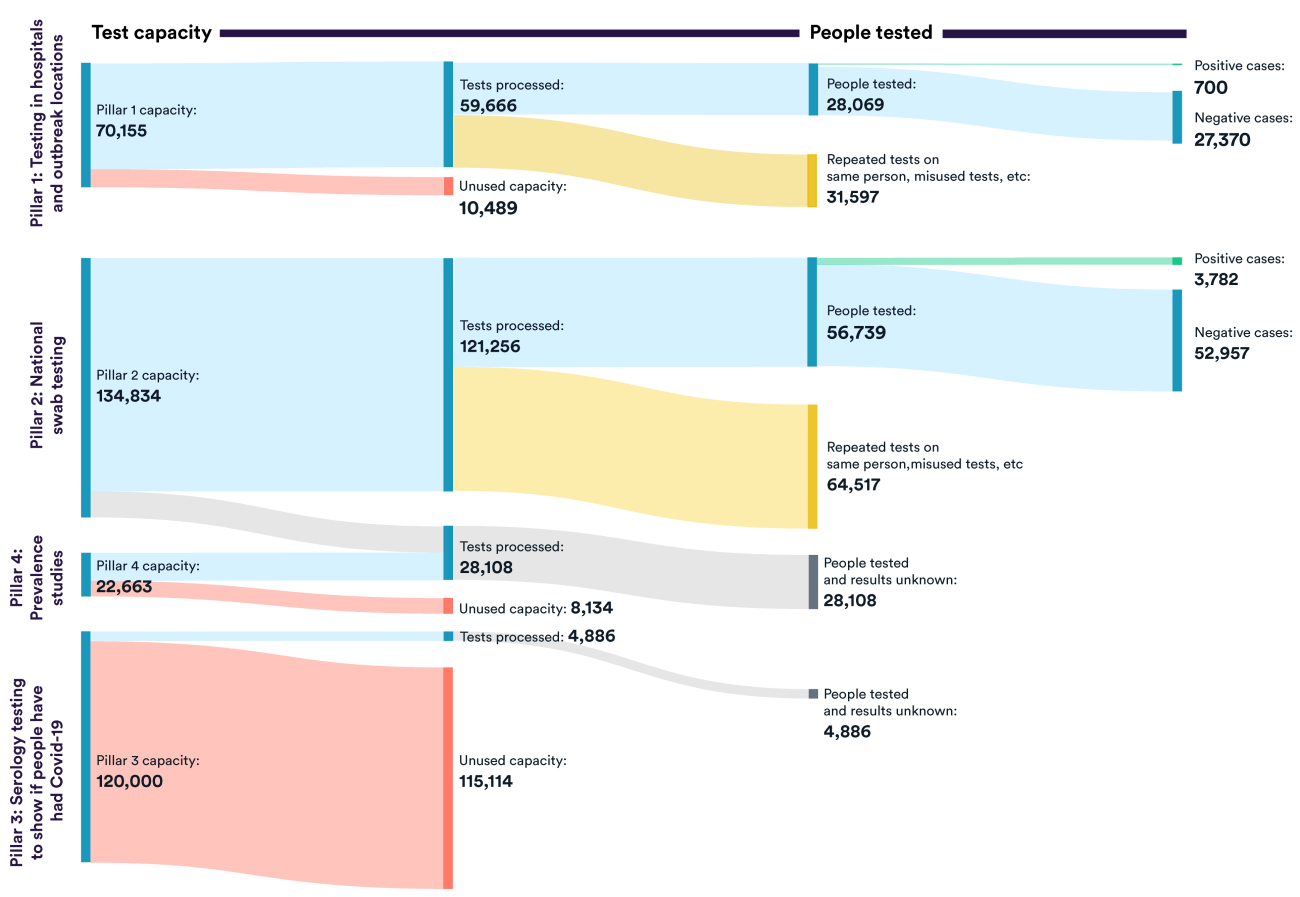Since Covid-19 reached the UK, the importance of testing people has been clear – “test, test, test” as the Director General of the WHO put it in March.
However, data on testing has – as described by the UK Statistics Authority – at times been “far from complete and comprehensible”. New reports that more than 15,000 Covid-19 cases went unpublished in government reports for more than a week only confirm this.
Such information is needed to help understand the epidemic and tell the public how effectively the testing programme is being managed. In response, we pulled together the published data to describe – as far as can be ascertained – the capacity, number of tests and number of people being tested.
For the week ending 23 September, the average daily lab capacity for processing Covid-19 tests was in the region of 380,000 for the UK as a whole. On top of this, some surveillance studies use home antibody tests that do not even require lab capacity. Around a third of the lab capacity is for antibody tests, which seek to highlight whether someone has had the virus. The remaining capacity covers swab (antigen) tests, which tell whether the person currently has it.
While some parts of the programme – particularly the national swab tests, which include regional drive-through and home testing – appear to be running at full capacity, other parts are not. In total, the tests processed in hospitals and outbreak locations account for 85% of capacity, while only 4% of the stated capacity for serology (antibody) tests is used.
For England, the data suggest around 200,000 tests were processed across the different testing programmes each day in the last week for which data are available. However, this is not the same as the number of people tested. For the parts of the testing programme for which the information is available, there are broadly two tests for every person tested. A person might be tested more than once – for example to confirm the result, because of an error in handling the original test, or if they received two swabs (one for their nose and one for their mouth).
Where known, around 1 in 19 tests were positive. The positive tests from testing in hospitals and outbreak locations (pillar 1) and national swab testing (pillar 2) – as well as from swab tests in prevalence studies (part of pillar 4) are referred to NHS Test and Trace. There were reported issues with some people initially unable to record positive tests into the NHS Covid-19 App. This appears to remain the case for some negative tests.
The government continues to make increasingly ambitious claims regarding testing. But the data remain patchy, with some information missing for the individual countries of the UK and for particular ‘pillars’ of testing. Given the costs of this testing programme and its importance in controlling Covid-19, it is important that efforts are also put into communicating the effectiveness of the programme to the public.

